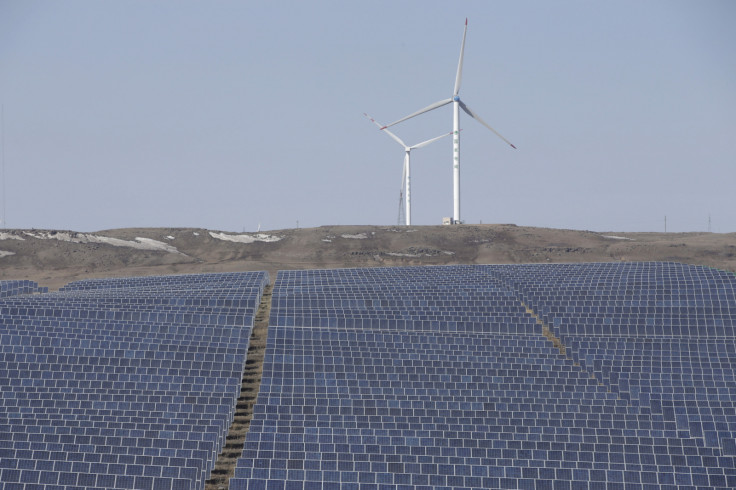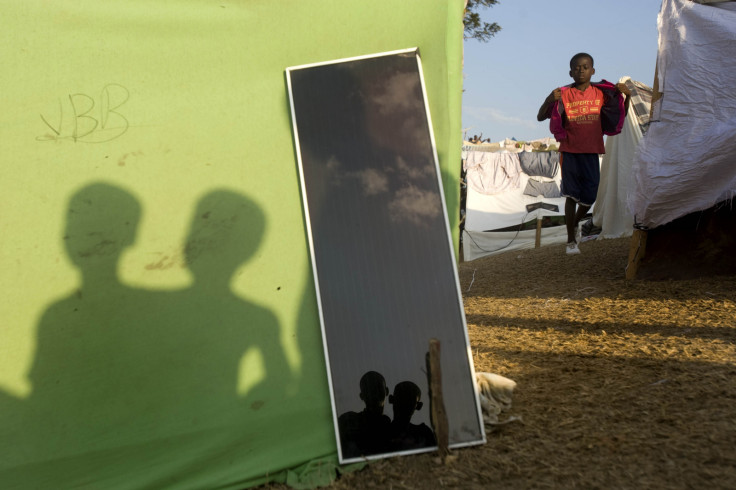From post-apocalyptic nomads to an Ikea world: Radical visions of the future of energy
What if we could fundamentally shift our thinking and reset our energy priorities and investment plans?
Is your company, organization, or community prepared for a radically reinvented future of energy?
In summer there is a striking divide between countries with energy grids powering heat control and less developed parts of the world where high temperatures means people will die. Our comfort and survival depend on our ability to continue to power the planet. But because energy is a limited resource, it's not equally distributed.
Views of the "almost probable certain future" show this situation being addressed over the next five decades. But what if we could fundamentally shift our thinking and reset our priorities and investment plans? In our book, The Future Reinvented – Reimagining Life, Society, and Business we explore alternatives future scenarios. Here, we draw on those perspectives, combined with new outlooks, visions, and fantasy thinking to explore four scenarios for the reinvented future of energy.
The scenarios draw in particular on a workshop on how global societies might be powered in the decades to come, which our team designed and facilitated at the Finland Futures Research Conference in Tampere, Finland in June 2018.

A sunlit solution – scenario one
This future takes place between 2020 and 2050. It rests on the progression of organic solar cells and advances in solar panel performance; and a focus on peer to peer energy distribution systems. Cutting out the grid leads to a healthier, renewable, and optimized quality of life. It gives regular people something of value that they can sell to meet their basic needs.
In 2020 politicians are trying to maintain the status quo and resisting the changes being enabled by solar energy. By 2030, they realize there are more energy producers than consumers. Also there is enough clean energy to last a lifetime. Sustainability becomes the norm.
By 2040, each person might be producing their own energy and sharing it. By 2050 there would be drastic lifestyle changes. For example: An Indonesian family with one child; the parents work from home as part of a global network doing professional jobs in a small business. Because there is abundant energy they don't have to struggle for survival and can do what they love.
One challenge is that almost all-natural surfaces are covered in solar panels. This seems at odds with the fact that all local natural and human resources gain more and more value. Natural beauty becomes a rare sight even in former beauty spots.

I've got the power – scenario 2
This scenario explores 2040 where social values have evolved significantly. People prioritize open access, trust, and love. The triggering event is a truly game-changing new energy technology. A personal wearable device is invented to provide personal freedom powered by unlimited energy – capturing and transforming energy produced by the body such as heat and motion.
The reader is asked to imagine a decentralized future where the body can actually produce all the energy needed to run society. There would likely be so much energy available that we'd have an excess. We could perhaps transform it into technologies that provide shelter, heat, and transport.
It is also possible that future abundant energy would be applied to negative purposes. Weapons, pollution, illness, and social control could be some of the darker ramifications of a future where the human body is an energy source.
Consider Frida who lives in a city in China that stores the energy of citizens. Not every city has this technology yet, so the city is prosperous. The economy is based on producing and selling energy. Initially the technology was used to eliminate air pollution. This was very popular. The next stage is developing the technology enabling the city to store personal energy. In this future, Frida has the freedom to choose what to do with her time as her own personal energy produces wealth.

Post-apocalyptic networked nomads – scenario 3
This scenario describes the emergence of a nomad network after an ecological crisis. It takes place before 2050.
A major climate change induced ecological and civilization crisis with rising sea levels destroying cities. The populations that survived live in extreme weather conditions. Society has become post-urban and nomadic.
Radically less energy is consumed per person. Society becomes a series of tribes connected by mobile devices. People have learned the lessons of the disaster, so they collaborate through their devices, becoming a global mobile community. Energy regulation is based in the values of the nomadic tribes.
People move from one place to another on robotic horses, living in tents with solar panels. Old unused buildings and skyscrapers become the platforms for solar panels and storage units.
The tribes have turned to marine agriculture, producing algae, grown using robots. These farms are not sufficient to support a lifetime's food supply, so the nomads move and wait for new algae to grow in order to come back to harvest their crops.

An Ikea world –scenario 4
This scenario involves a smart Scandinavian megacity design colonizing the earth between 2020 and 2050. Communities have efficient physical infrastructure for housing. However, there are many overlapping activities taking place in the virtual world, where the real "community" exists. The self-sufficiency of most buildings reduces the need for transport. Education and work are virtual, urban gardens produce ample food, and waste forms a key energy source. The design of the megacity encapsulates the zeitgeist of self-sufficiency.
This future started with migration problems but thrived thanks to technological innovations. Renewable energy infrastructure, the internet of things (IOT), and artificial intelligence (AI) facilitated the optimization of truly intelligent cities and a network of smart, self-sustaining communities.
For example, the Perez family joined an energy cooperative residential community. Adopting a collective mindset, their energy consumption became more efficient. Everything they need is within their building: food from vertical gardens, good neighbours, community entertainment, and supportive social safety net.
These scenarios push the boundaries and pose further questions about our energy future:
How radical are the energy conversations where you live? How are your company, organisation, community preparing for a range of possible futures? If people are operating within narrow paradigms, what can be done to push the boundaries and reinvent the range of possibilities?
Rohit Talwar, Steve Wells, Alexandra Whittington and Helena Calle are futurists from Fast Future, a professional foresight firm specializing in delivering keynote speeches, executive education, research, and consulting on the emerging future. The latest books from Fast Future are: 'Beyond Genuine Stupidity - Ensuring AI Serves Humanity', and 'The Future - Reinvented: Reimagining Life, Society, and Business'. And their forthcoming book is '500 Futures'. See: www.fastfuture.com
© Copyright IBTimes 2025. All rights reserved.





















